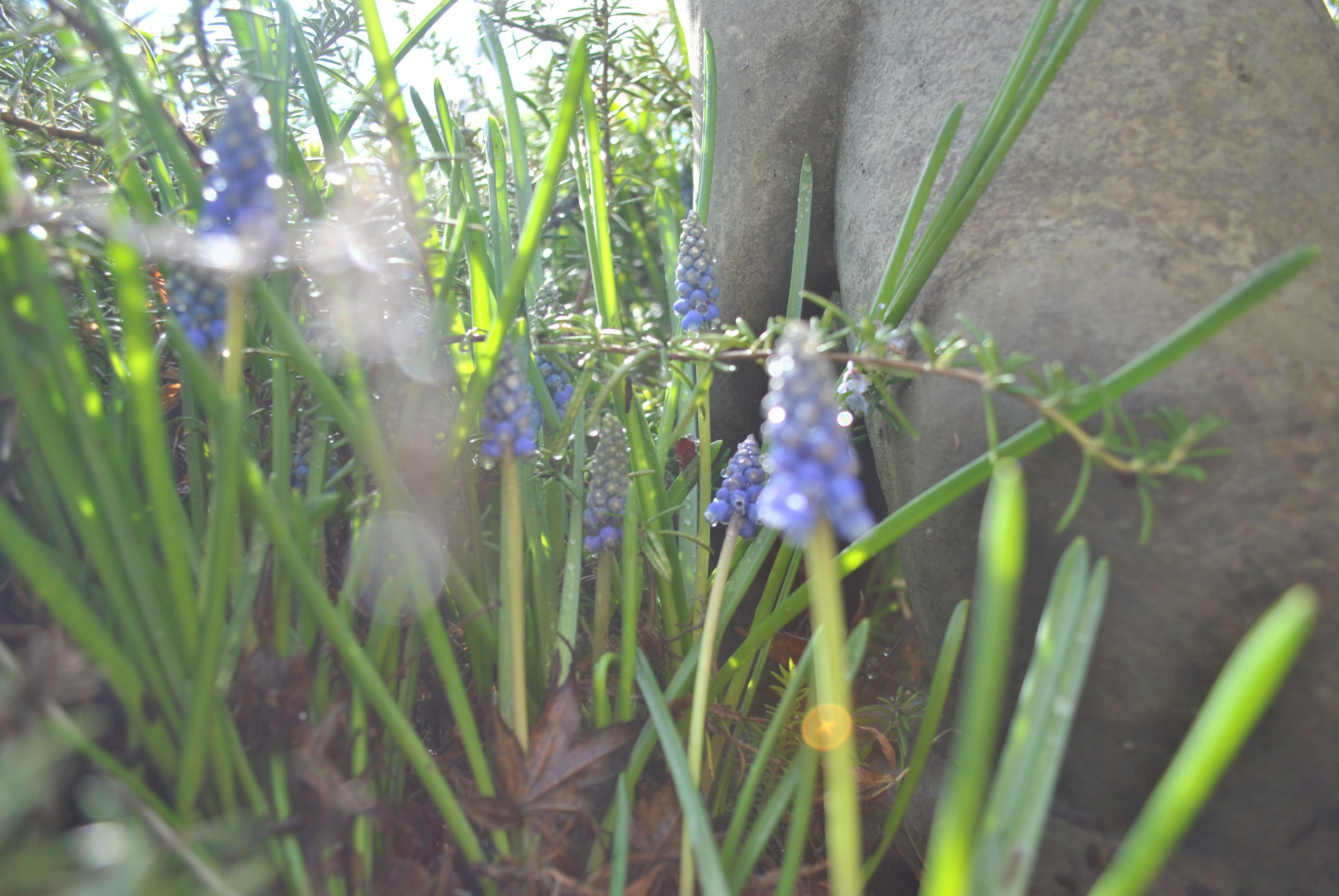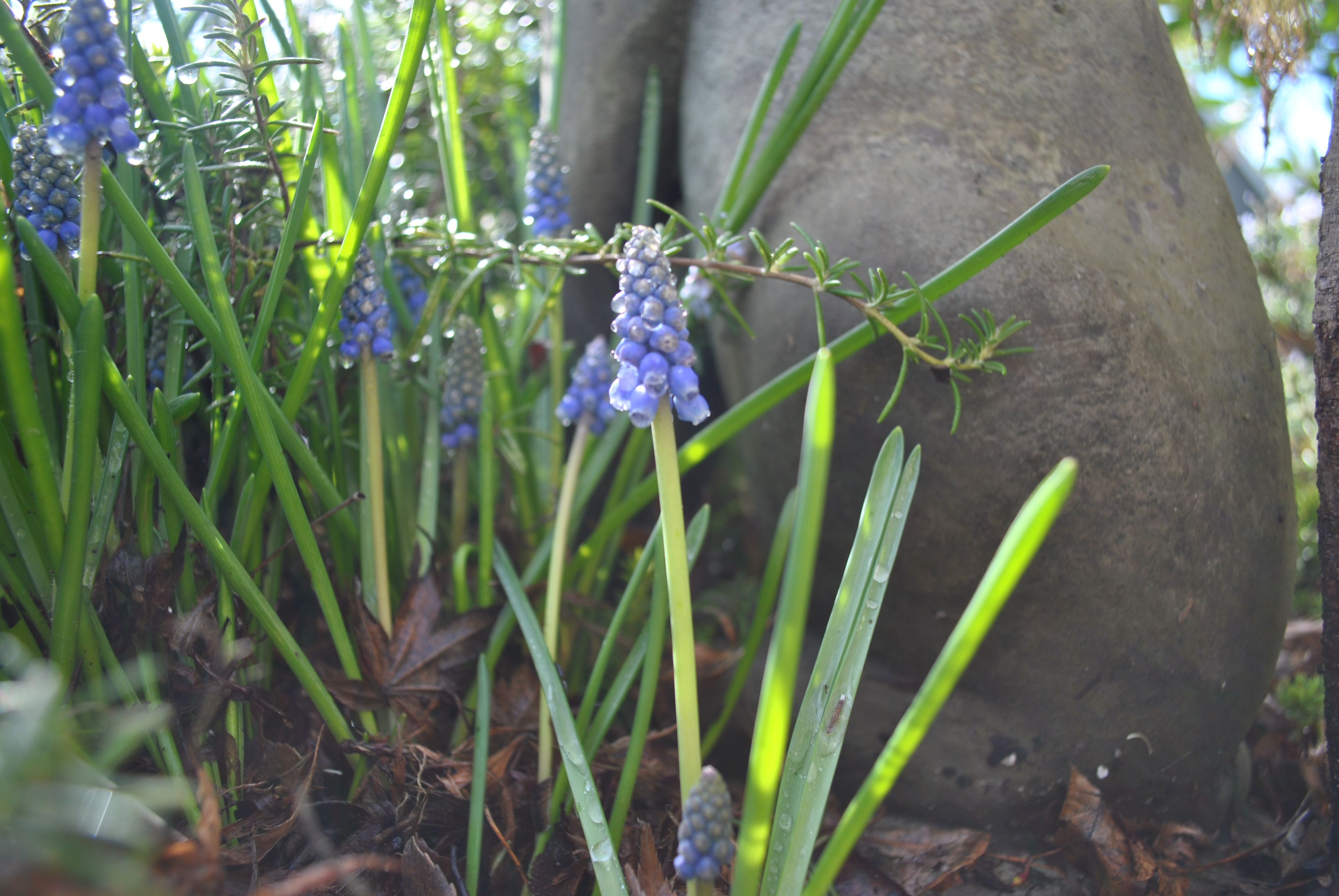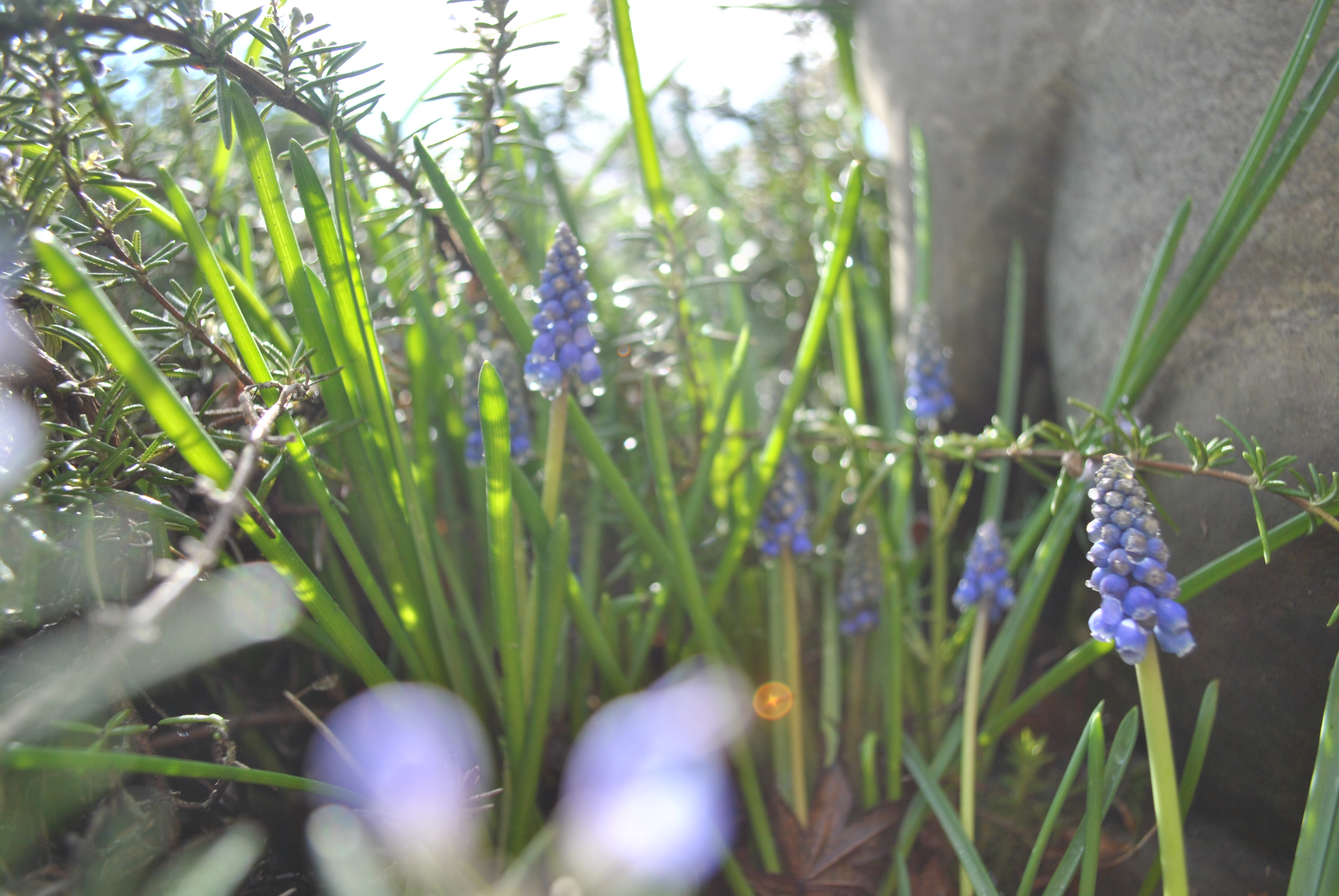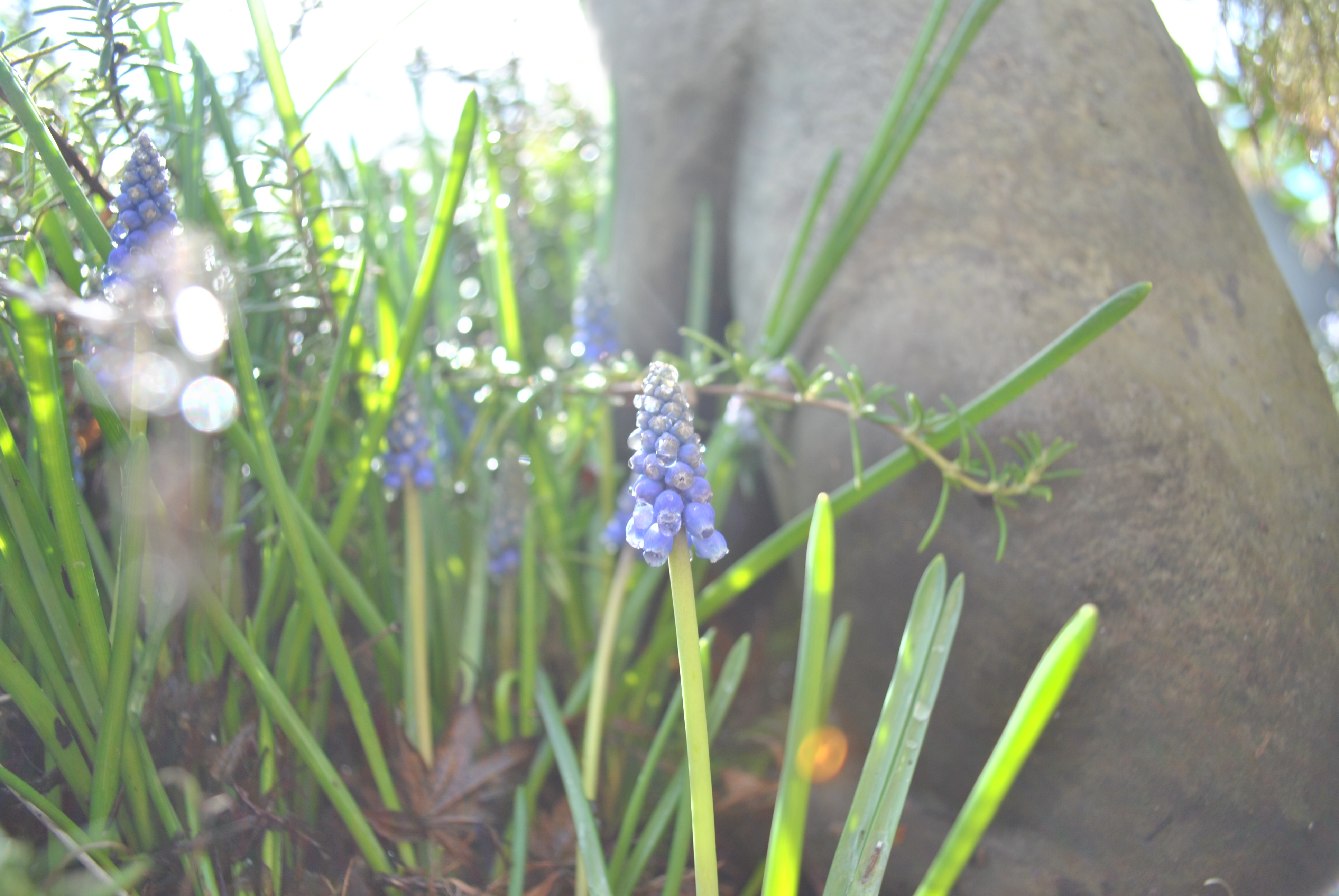Grape Hyacinth (Muscari armeniacum)

Photo by Ella Schwab
Muscari, commonly known as Grape Hyacinth, is in the same family as asparagus (Asparagaceae). The name Muscari comes from the Greek word for musk. I have never noticed that they have much more than a green, earthy scent. Maybe their ancestors in the Mediterranean were scented. The most common species are Muscari armeniacum (blue) and Muscari butryoides (white). They most likely made their way to the United States via England where their cultivation began in 1576.

Photo by Ella Schwab
Reasons to like them
- They are short and don’t require staking.
- Because they are short (4-6″ tall) they add another level to the under-story that is above ground cover.
- They are easy to grow
- They are cheery and cute.
- They will naturalize and spread on their own.**

Photo by Ella Schwab
Plant your Muscari bulbs in the fall in an area with cool, moist (not wet) soil. If the soil stays too wet the bulbs will rot. Grape hyacinth prefers a location that has filtered sunlight or shade.
The flowers usually show up after the snowdrops and crocuses, slightly ahead of the daffodils. In the late winter/early spring you will see their long slender leaves and flower stalk emerging. On top of the stem is a purplish blue cluster of urn-like flowers resembling an upside down cluster of grapes. Since they bloom so early the blue color only needs to work with whatever else is blooming nearby at that time. They will have disappeared by the next wave of blooming plants such as azaleas and rhododendrons.

Photo by Ella Schwab
When they are spent the foliage and stalk are easily pulled away from the bulb. If the stalk doesn’t come away easily wait a little longer.
**Some even call Muscari invasive although I’ve never had a problem with it in my garden.